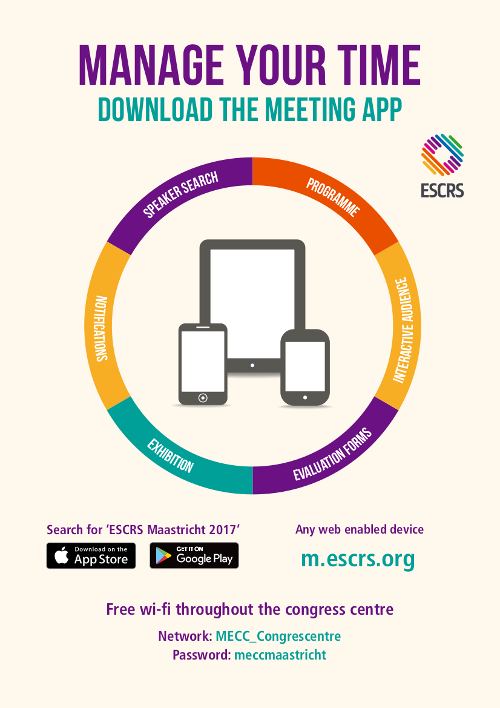Cost-effectiveness of corneal cross-linking for progressive keratoconus
(results will display both Free Papers & Poster)
Session Details
Session Title: Cornea
Session Date/Time: Friday 10/02/2017 | 08:30-10:00
Paper Time: 09:12
Venue: Brussels Room 0.4
First Author: D. Godefrooij THE NETHERLANDS
Co Author(s): M.J. Mangen E. Chan D. O'Brart S. Imhof A. de Wit R. Wisse
Abstract Details
Purpose:
To evaluate the cost-effectiveness of corneal crosslinking (CXL) for progressive keratoconus from the healthcare payerメs perspective.
Setting:
A probabilistic Markov-type model utilizing data from published clinical trials and cohort studies.
Methods:
Two identical cohorts, each comprised of 1,000 virtual patients with progressive bilateral keratoconus, were modeled and evaluated annually over a lifetime; one cohort received CXL and the other cohort received no intervention. Quality-adjusted life years (QALYs), total cost, disease progression, and the probability of corneal transplantation and/or graft failure were calculated based on data from published trials and cohort studies, and these outcomes were compared between the two cohorts. The stabilizing effect of CXL was assumed to be ten years; however, longer durations were also analyzed. Sensitivity analyses were performed to test the robustness of the outcomes.
Results:
Assuming a 10-year effect of CLX, the incremental cost-effectiveness ratio (ICER) was タ54,384/QALY ($59,822/QALY). When we adjusted the effect of CXL to a lifelong stabilizing effect, the ICER decreased to タ10,149/QALY ($11,163/QALY). Other sensitivity and scenario analyses that had a relevant impact on ICER included the discount rate, pre-CXL visual acuity, and healthcare costs.
Conclusions:
CXL for progressive keratoconus is cost-effective at a willingness-to-pay threshold of タ115,518 ($127,070), which is three times the current gross domestic product (GDP) per capita. Moreover, a longer stabilizing effect of CXL increases cost-effectiveness; If CXL would have a stabilizing effect on keratoconus of 20 years or longer the ICER would be under the one time GDP per capita threshold and thus very cost effective.
Financial Disclosure:
None



